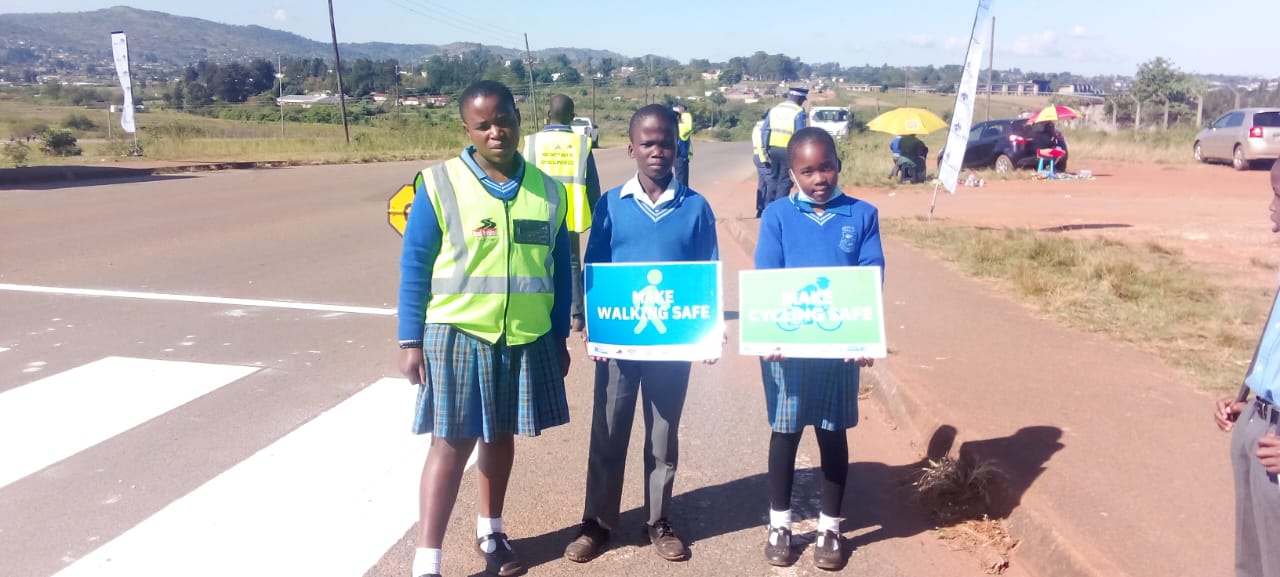By Phesheya Ian Kunene
MBABANE – As the world turns its attention to the 8th United Nations Global Road Safety Week, Eswatini’s own Road Accident Action Group (RAAG) has hit the ground running, in its mission to make walking and cycling safer for everyone.

The non-profit organisation, known for its boots on the ground activism, has rolled out a series of road safety interventions aligned with this year’s UN campaign theme: “Rethink Mobility: Make Walking and Cycling Safe.”
Speaking on the sidelines of one of their recent school zone activations, RAAG Founder and Director Sanele Sibandze confirmed that they were not just talking the talk.
He said they had already painted pedestrian crossings at Ecinisweni Primary School and were currently on site at Ludzeludze Primary School, continuing their mission to protect the country’s most vulnerable road users, children and pedestrians.
“Lives are being lost daily to preventable crashes,” Sibandze was quoted as saying.
“We couldn’t wait for the campaign to begin. Thanks to a generous donation of road paint from Dulux Eswatini and a green light from the Ministry of Public Works and Transport, we’re acting now, targeting high risk zones near schools.”
The markings, he explained, are not merely cosmetic. They serve as visual cues to motorists and could make the difference between a safe journey and a tragic headline.

RAAG Eswatini’s involvement comes at a time when communities are grappling with growing concerns over reckless driving, unmarked crossings and pedestrian-unfriendly infrastructure. According to the group’s latest Mobility Snapshot, 70 percent of residents feel unsafe walking or cycling due to speeding vehicles and poor road design.
The non-profit is now calling on national and local governments to implement a 30 kilometre per hour speed limit in zones with high pedestrian activity, particularly near schools, residential areas and markets. The organisation wants these interventions rolled out within 36 months, including legislation, community consultations and the installation of proper signage.
“We are also deeply concerned about road accidents involving livestock,” Sibandze said, adding that too many crashes are being swept under the carpet, especially on public roads. “There needs to be accountability and proactive measures. Every accident is one too many.”
To amplify its impact, RAAG has lined up a series of high visibility events during the Road Safety Week, which officially began on April 23. These include a Safe Routes Community Walk and Ride event in Manzini, interactive workshops and an aggressive media campaign promoting pedestrian safety.
The group is targeting influential government decision makers, including Minister of Public Works and Transport Chief Ndlaluhlaza Ndwandwe and various municipal mayors, in its advocacy efforts. A public town hall is scheduled for May 16 to give residents a platform to raise safety concerns directly with policymakers.
With a proposed budget of just under E20 000 per site, RAAG’s efforts appear to be a high impact, low cost intervention with the potential to save lives. Key goals include installing ten new pedestrian crossings, securing stakeholder endorsements and reducing pedestrian-related road deaths by 30 percent over three years.
RAAG’s approach is as pragmatic as it is passionate. The group is banking on partnerships with corporate sponsors, local NGOs and media houses to drive awareness and community ownership. “We’re not doing this for clout. We’re doing it because every child, every pedestrian deserves to feel safe on our roads,” Sibandze was quoted as saying.
As the campaign gains momentum, RAAG Eswatini continues to prove that safety is not just a statistic, it is a shared responsibility.





